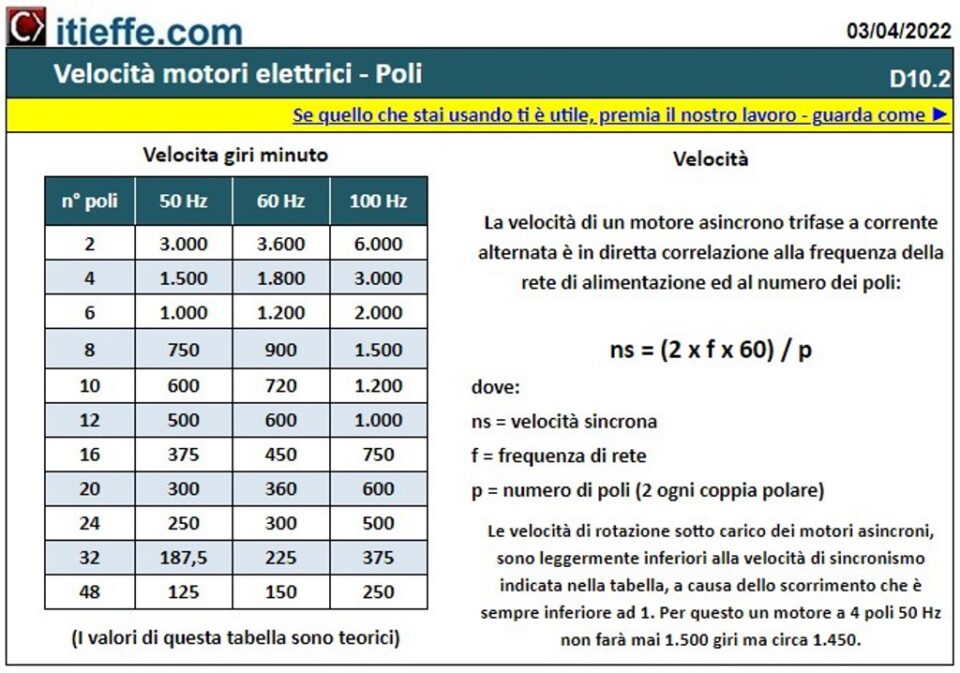Rotation speed electric motors

Electric motors: theoretical rotation speed determined by the number of poles
Rotation speed electric motors
Welcome to this guide created by Itieffe, dedicated to electric motors and their theoretical rotation speed determined by the number of poles. This fundamental aspect of electric motors directly influences their performance and practical application in a wide range of industrial and technological sectors.
The importance of speed in electric motors
Rotational speed is one of the key characteristics of electric motors and has a significant impact on their performance.
Understanding how this speed is affected by the number of poles in the motor is essential for engineers, technicians and professionals in fields such as industrial automation, mechanical engineering and electronics.
Objectives of the Guide
This guide was created with the aim of providing a complete overview of the following aspects:
- Number of poles and rotation speed: we will explore the relationship between the number of poles of a motor and its vetheoretical rotation speed. We will explain how to calculate this speed and how this knowledge can be applied in practice.
- Practical Applications: We'll illustrate how understanding this concept is crucial in a number of industries, including mechanical engineering, manufacturing, and more.
- Design Considerations: We will discuss how this concept will impact the design and selection of electric motors to meet specific application needs.
- Theoretical rotation speed: we will delve into the concept of theoretical rotation speed of electric motors and explain how it is influenced by the number of poles in the motor.
Electric motors speed - Poles
The speed of an AC three-phase asynchronous motor is directly related to the frequency of the power supply network and the number of poles:
ns = (2 xfx 60) / p
where:
ns = synchronous speed
f = network frequency
p = number of poles (2 each polar pair)
The rotation speeds under load of asynchronous motors are slightly lower than the synchronism speed indicated in the table, due to the slip which is always less than 1.
For this a 4-pole 50 Hz motor will never make 1.500 revolutions but about 1.450.
Speed rpm
number of poles |
50 Hz |
60 Hz |
100 Hz |
| 2 | 3.000 | 3.600 | 6.000 |
| 4 | 1.500 | 1.800 | 3.000 |
| 6 | 1.000 | 1.200 | 2.000 |
| 8 | 750 | 900 | 1.500 |
| 10 | 600 | 720 | 1.200 |
| 12 | 500 | 600 | 1.000 |
| 16 | 375 | 450 | 750 |
| 20 | 300 | 360 | 600 |
| 24 | 250 | 300 | 500 |
| 32 | 187,5 | 225 | 375 |
| 48 | 125 | 150 | 250 |
(The values in this table are theoretical)
Other free programs of the same kind offered by itieffe ▼
- Electricity - Electronics
- Calculation of color coded electric resistances
- Electric - electronic tables
- Electrical drawing diagrams
Rotation speed electric motors
The program / paper shown below is free to use.
To access the reserved version (see below), full page and without advertising, you must be registered.
You can register now by clicking HERE
